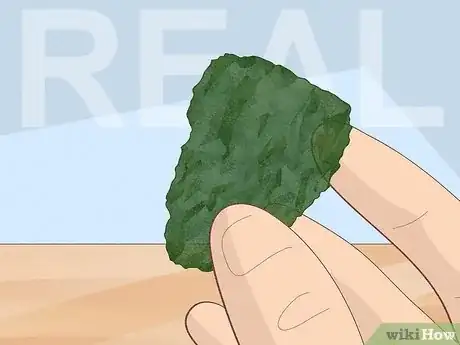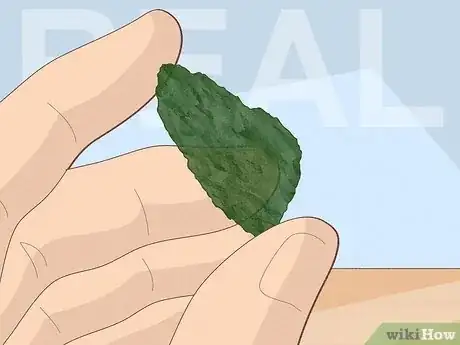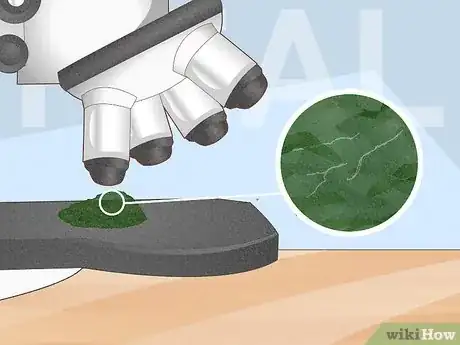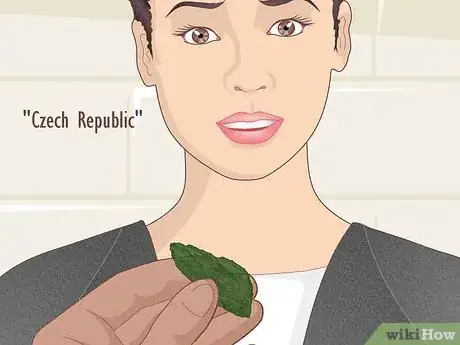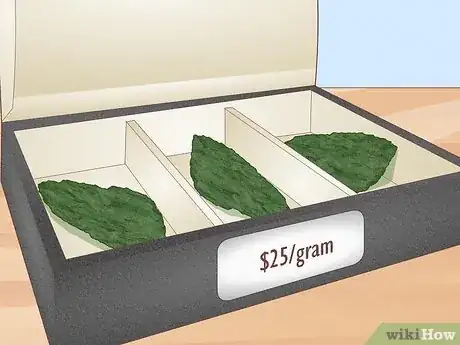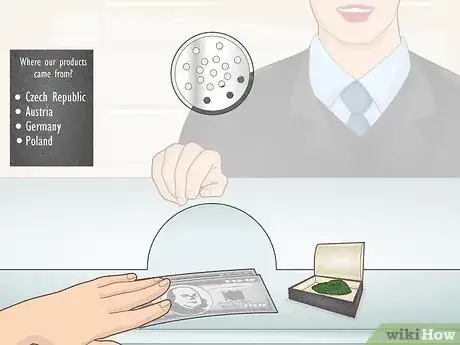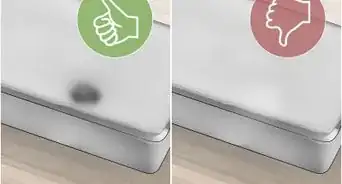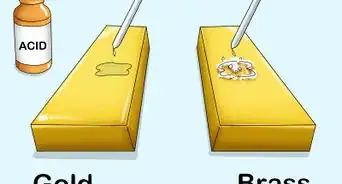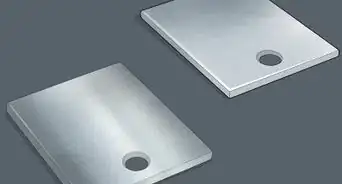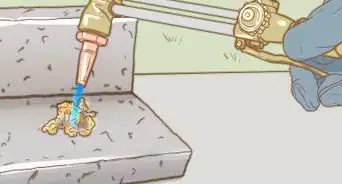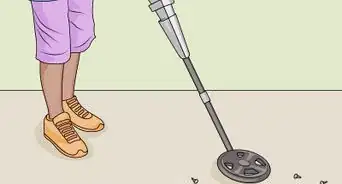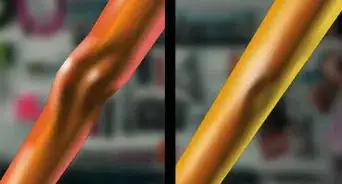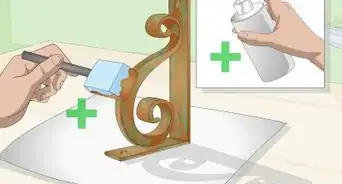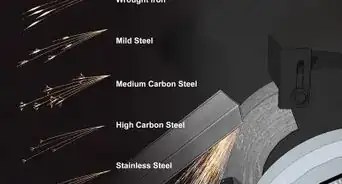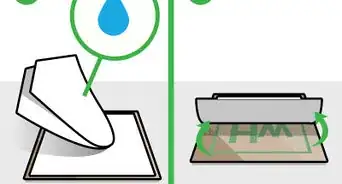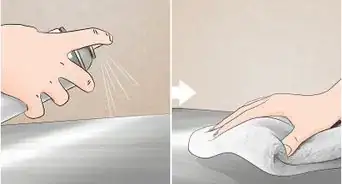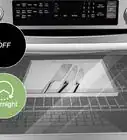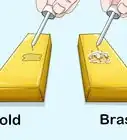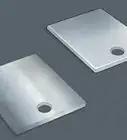This article was co-authored by wikiHow staff writer, Devin McSween. Devin McSween is a wikiHow Staff Writer. With a background in psychology, she has presented her research in social psychology at a variety of conferences and has contributed to several manuscripts for publication. At wikiHow, Devin combines her love of writing and research with the goal of bringing accessible information to wikiHow readers that will help them learn and grow. She earned her BS in Psychology from the College of Charleston.
There are 13 references cited in this article, which can be found at the bottom of the page.
This article has been viewed 5,118 times.
Learn more...
Moldavite is well known for its deep green color, unique texture, meteorite crash origins, and powerful energy that can help with spiritual awakening and healing. For these reasons, moldavite is incredibly popular, which comes along with numerous fakes flooding the market. In this article, we’ll tell you how to determine if your moldavite is real, how to spot a fake, and what to look out for when buying moldavite so that you can use your moldavite to its full potential.
Things You Should Know
- Look for a bottle green color, a grooved and rugged shape, and flaws like bubbles and inclusions inside real moldavite.
- Avoid moldavite if it has no irregularities, is a bright and glossy green, and has a smooth shape.
- Buy moldavite from reputable sellers who source moldavite from the Czech Republic, Austria, Germany, or Poland.
Steps
Signs Moldavite Is Real
-
1Real moldavite is bottle green in color. Moldavite is not a true gem or crystal but a tektite, a natural glass that forms from an asteroid colliding into Earth.[1] Inspect your moldavite for a nonuniform green color with a glassy, slightly translucent appearance. Moldavite can range from very light green to dark, almost black green and can display this full range in a single piece.[2]
- Some moldavite pieces have brown streaks and take on a more mossy green appearance.
-
2Moldavite has a grooved and rugged texture. A real, raw piece of moldavite is not smooth and has hundreds of wrinkles and grooves on its surface. Some pieces can be spikey and jagged, but they will still have a ripple like appearance.[3]
- If your moldavite is faceted, meaning it is cut and polished like a diamond with flat sides and a pointed end, it will not have this grooved, rugged appearance. Look for other characteristics to determine if it’s real.[4]
- Researchers believe that water etched these grooves in the newly formed moldavite.[5]
Advertisement -
3Moldavite is small with an irregular, flat shape. Most moldavite is flat and elongated with a rough and fractured appearance. Moldavite pieces can also be elliptical, like a stretched sphere, or teardrop in shape.[6] The fragments are small and rarely weigh more than 3 ounces (100 grams).[7]
- Moldavite can be faceted like diamonds and other gems, but it is more common to find them unfaceted due to their unusual shape and texture.[8]
-
4There are bubbles inside real moldavite. Moldavite contains elongated air bubbles that are typically regular in shape. These bubbles formed as gas became trapped inside the cooling moldavite. Most pieces of moldavite will contain many bubbles, but these bubbles are rarely found near the glass’ surface.[9]
- You will likely need a magnifying glass or microscope to see the bubbles within your moldavite.
-
5Real moldavite is full of imperfections. You won’t find a piece of moldavite that doesn’t have inclusions, or pieces of other materials, inside. The most common inclusion is lechatelierite, a quartz-like glass, that makes long, wiry imperfections inside the moldavite. The inclusions are extremely small, so you will need a magnifying glass or microscope to see them.[10]
Spotting Fake Moldavite
-
1Fake moldavite doesn’t have any irregularities. The most telling sign of a fake moldavite is a lack of bubbles and the wire-like lechatelierite inclusions. Synthetic moldavite will not have the wiry inclusions that each piece of real moldavite has in abundance. While bubbles may form when the glass is being poured into the molds, these bubbles will be fewer, more circular, and towards the glass’ surface, which you won’t find in real moldavite.[11]
-
2A bright, uniform color means moldavite is fake. Though both real and fake moldavite are made out of glass, real moldavite gets its green color from its iron content while fake moldavite is dyed. You can tell the moldavite is fake if it has a bright, lustrous green appearance without the variation and almost dirty appearance real moldavite has. Any shops that sell moldavite in a color other than green, such as red, blue, or yellow, are fake.[12]
- You can place a suspected fake piece of moldavite under a UV light. If the piece appears to fluoresce or glow and takes on a yellow-green color, it’s a fake.[13]
-
3Fake moldavite has a less natural shape and texture. Most sellers use a mold to create their moldavite, which will have a more smooth, perfect looking contour compared to the unique, amorphous shapes of real moldavite. The grooves and ridges on fake moldavite will also be more uniform and polished than real moldavite.[14]
- Look through sellers’ moldavite inventory. Since they use molds to create synthetic moldavite, you will likely see the same moldavite shape and appearance even if the pieces are different sizes.[15]
- Some shops are creating more natural looking moldavite by mimicking how real moldavite’s grooves and ripples were etched. However, use a magnifying glass or microscope to look for grooves and ripples that are straight and evenly spaced which indicate that the moldavite is fake.[16]
-
4Fake moldavite has a clear, glossy appearance. Synthetic moldavite is made by carefully pouring melted glass into molds. This results in moldavite that is transparent and shiny, even if the surface is properly ridged and rugged. You can’t see all the way through real moldavite because it is composed of other minerals and elements that makes it more opaque.[17]
What to Look for When Buying Moldavite
-
1Ask where the moldavite comes from. Moldavite is only found in the Czech Republic, Austria, Germany, and Poland. Avoid buying moldavite from shops that state their moldavite was mined in a different country, or if they do not say where their moldavite was sourced from at all.[18]
-
2Be wary of cheap prices. The rising popularity of moldavite means that it is more expensive than ever, averaging about $15 to $25 per ounce/gram but often going for even more.[19] However, synthetic moldavite is sold at a fraction of the real price. If you are looking at moldavite that is perfectly shaped, large, and clear but somehow also inexpensive, it’s a fake.[20]
-
3Buy moldavite from reputable sellers. Look for shops that have great reviews and list their sourcing locations. Many sellers will be from the Czech Republic because that is where most moldavite comes from. Avoid buying from eBay and Amazon as they are well known for listing fake moldavite.[21]
References
- ↑ http://www.tektites.co.uk/veryquickguide.html
- ↑ https://onlinelibrary.wiley.com/doi/10.1111/maps.12311
- ↑ https://www.researchgate.net/publication/349605393_LECHATELIERITE_IN_MOLDAVITE_TEKTITES_NEW_ANALYSES_OF_COMPOSITION
- ↑ http://www.tektites.co.uk/moldavites.html
- ↑ https://www.researchgate.net/publication/349605393_LECHATELIERITE_IN_MOLDAVITE_TEKTITES_NEW_ANALYSES_OF_COMPOSITION
- ↑ https://web.archive.org/web/20180601222339id_/http://www.minersoc.org/pages/Archive-MM/Volume_38/38-296-408.pdf
- ↑ https://www.gia.edu/gems-gemology/spring-2015-gemnews-moldavites-natural-fake
- ↑ http://www.tektites.co.uk/moldavites.html
- ↑ https://onlinelibrary.wiley.com/doi/10.1111/maps.12311
- ↑ https://onlinelibrary.wiley.com/doi/10.1111/maps.12311
- ↑ https://www.researchgate.net/publication/338753402_Distinguishing_Synthetic_and_Natural_Moldavite
- ↑ https://www.designswan.com/archives/planning-to-buy-moldavite-jewelry-heres-how-to-know-if-its-genuine.html
- ↑ https://www.knoxnews.com/story/sponsor-story/smoky-mountain-relic-room/2021/06/01/dazzling-array-crystals-and-gemstones-sevierville-tennessee/7453696002/
- ↑ https://www.researchgate.net/publication/338753402_Distinguishing_Synthetic_and_Natural_Moldavite
- ↑ https://www.neocrystals.com/how-to-tell-if-moldavite-is-real-or-fake#How_to_tell_if_Moldavite_is_Real_or_Fake_by_the_differences
- ↑ https://www.researchgate.net/publication/338753402_Distinguishing_Synthetic_and_Natural_Moldavite
- ↑ https://www.designswan.com/archives/planning-to-buy-moldavite-jewelry-heres-how-to-know-if-its-genuine.html
- ↑ https://www.designswan.com/archives/planning-to-buy-moldavite-jewelry-heres-how-to-know-if-its-genuine.html
- ↑ https://www.thecoldwire.com/why-is-moldavite-so-expensive/
- ↑ https://www.rockseeker.com/synthetic-gemstones/
- ↑ https://www.expats.cz/czech-news/article/the-czech-gemstone-moldavite-has-been-trending-but-what-exactly-is-it
- ↑ https://www.designswan.com/archives/planning-to-buy-moldavite-jewelry-heres-how-to-know-if-its-genuine.html
